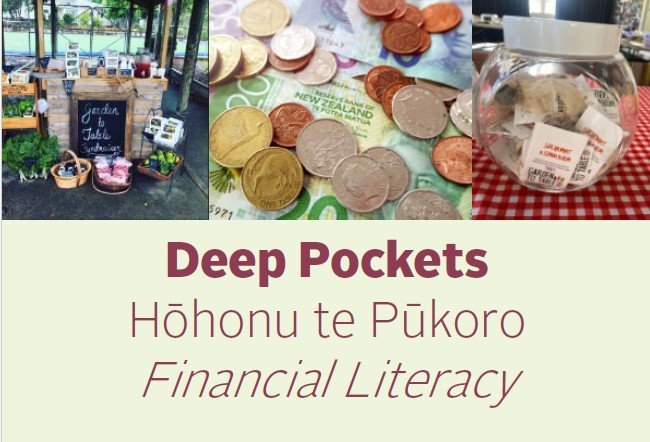Celebrating Money Month with our Financial Literacy Resource
August is Money Month and one year on from its launch, our Financial Literacy resource is proving popular with schools.
The resource titled Deep Pockets, Hōhonu te Pūkoro is a joint initiative with our Principal partners Rabobank and outlines a ten-lesson teaching unit which gives students the opportunity to learn about money through everyday garden and cooking activities.
By the end of the unit, students should be able to complete a product plan, understand how borrowing and investing money works, use financial terms and vocabulary and know what they mean, make and sell a product – including marketing and advertising, and write a basic financial report.
Anwar Hussain Nadat, a Year 5 and 6 teacher and team leader at Helensville Primary School in Auckland said he’d utilised the unit and felt it was hugely beneficial for his students.
“Over the years, I’ve taught bits and pieces on finance-related topics, but it’s proven difficult to get the ideas to stick. The module really helped bring different financial terms and concepts together, and it had a clear structure which made it really easy for me to deliver,” he said.
For the unit, Mr Nadat said, the students decided to run a bake sale for parents at the end of the term. A goal to raise $1000 was set with the proceeds going towards ingredient costs for the school’s weekly Garden to Table sessions.
“We’ve done bake sales before, but there was a real purpose behind this year’s event as everyone could understand why we were doing it and what we were trying to achieve,” he said.
“After a bit of discussion about how best to get to our target, the students quickly figured out that if they could get hold of the baking ingredients for free, then everything they made at the sale would be profit, so we reached out to the parents and they donated the ingredients to get things started.”
“We came up just short on our goal – raising $830 from the sale – but it was really great to guide the students through the whole process including making posters for the sale and getting them thinking about different tactics they could use to maximise sales on the day.”
“After doing the unit, I’m now hearing students talking about the type of bank accounts they have and about how much interest they are earning. And parents are telling us they are now hearing their children use more of these terms at home as well.”
Jemima Sawyer, one of Mr Nadat’s year 6 students, said the module had given her a much better understanding about the financial aspects of running a business.
“As part of the module, we created expenditure sheets for the Garden to Table programme we run at school, this really helped us because for the first time we could see how much money it costs yearly to run, so we knew exactly how much we need to raise for next year,” she said.
Holly Weber, a teacher at Whangarei Intermediate, has also used the unit with a group of tamariki.
“Our small eco warriors group embarked on a financial literacy journey inspired by our term topic, Puanga (the abundance of food). For their product, they developed a Kawakawa balm which proved immensely popular, selling out rapidly and generating a profit of roughly $100. This early success ignited the students' entrepreneurial spirit, motivating them to explore further and they already planning their next batch,” she said.
“Upon returning to school in term 3, the group collectively decided to donate the profits to Open Arms, a local charity they are immensely proud to support. This experience not only fostered financial knowledge but also cultivated a strong sense of whanaungatanga (kinship).”
Accessing the new resource
Usually, these types of resources are only available to schools participating in the Garden to Table programme, but anyone can download this resource for free!





